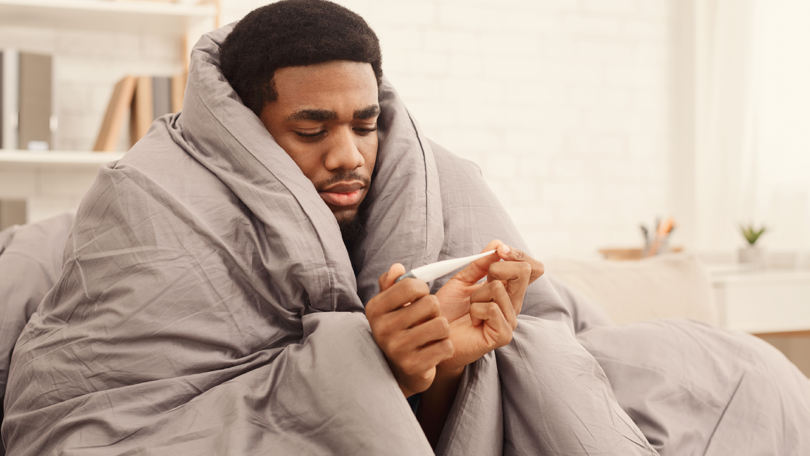Question: Will COVID-19 eventually become like the annual flu – waxing and waning with the seasons?
Answer: It’s true that many infectious diseases follow a seasonal pattern with infection rates going up and down as the weather changes. For instance, influenza cases tend to peak during fall and winter months in both the northern and southern hemispheres.
However, SARS-CoV-2 – the coronavirus that causes COVID-19 – is so new that it’s difficult to predict how it will behave in the future.
But preliminary evidence suggests that the activity of this virus isn’t linked to local temperature variations or geographic latitude – at least for now.
One intriguing study looked at COVID-19 cases in 144 separate jurisdictions (various provinces, states and countries) during March when the pandemic was galloping around the globe.
The researchers collected data about temperatures, humidity and latitude, as well as public health measures introduced to control the virus, for the period of March 7 to 13. Then, allowing for a two-week interval for new infections to develop, be diagnosed and reported, they looked at the growing case count for the period of March 21 to 27.
The results showed the virus “doesn’t depend on temperature,” says the study’s lead author Dr. Peter Jüni, director of the Applied Health Research Centre at St. Michael’s Hospital in Toronto.
But, he added, public health measures – such as restricting mass gatherings and school closures – did help curb the virus.
In other words, communities that quickly took steps to contain the virus did better than those that were slow to respond – regardless of seasonal factors like temperature.
Dr. Jüni stresses that his study represents “a snapshot” in time. “COVID-19 might eventually become seasonal,” as the virus and the human population interact with each other, he adds.
Right now, though, people are extremely vulnerable to the novel coronavirus. SARS-CoV-2 has been around for only several months. So, most people still have no immunity to it. That means the virus can cut a swath through humanity without facing any natural barriers to slow its advance.
As more and more people become infected, they are expected to develop some immunity and the virus will have a harder time spreading within the community.
When that happens, there is a possibility the virus will change, says Dr. Samira Mubareka, an infectious diseases physician and virologist at Sunnybrook Health Sciences Centre in Toronto.
She points out that many viruses routinely mutate, which can produce new genetic variants that can make it easier for them to proliferate.
In the case of SARS-CoV-2, “it doesn’t currently have a huge amount of pressure on it to change because it transmits quite effectively,” she explains. But, as human resistance increases, natural selection will favour those traits that give it a competitive edge.
And if the virus morphs, it might begin to resemble other infectious diseases that follow seasonal patterns.
But even with long-established viruses – such as influenza – scientists don’t fully understand how seasonal factors drive viral activity. Temperature, humidity and solar radiation vary with the seasons. Yet, at the same time, human behaviour also changes. Students attend school in fall and winter months. And people are more likely to congregate indoors with the return of inclement weather. Bringing people closer together makes it easier for a virus to spread.
So, it can be difficult for researchers to determine what has the biggest impact on transmission – variable seasonal factors or changes in human activity? Both may be equally important.
Despite such uncertainties, it is becoming increasingly clear that SARS-CoV-2 has a harder time spreading outdoors than indoors, says Dr. Jüni.
He notes that SARS-CoV-2 is transmitted through large respiratory droplets and possibly also their smaller counterparts called aerosols that may stay airborne after an infected individual coughs, sneezes or simply talks.
Outdoors, a gentle wind can “literally blow away” the aerosols, he says. What’s more, the sun may kill any viral particles that land on nearby surfaces.
“The longer this pandemic goes on, I become more convinced that crowding inside is the major problem,” says Dr. Jüni.
It’s a point of view that is shared by many medical experts who say we need to keep doing the things that can thwart the virus – such as physical distancing, proper hand washing, wearing face masks, as well as targeted testing and contact tracing.
In the fall, when Canadians retreat inside again, “it’s going to be really important that we don’t let down our guard,” says Rob Kozak, a clinical microbiologist at Sunnybrook.
He says the medical community learned a lot about how to contain the virus during the first wave of the pandemic. “The optimist in me says we can do a better job of controlling a second wave,” he adds. “Hopefully, I am not wrong.”








